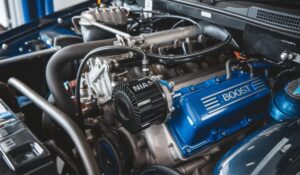Introduction
who owns maserati is synonymous with luxury, performance, and Italian craftsmanship. But beyond its stunning designs and powerful engines, a question often arises: who owns Maserati? The ownership history of this prestigious brand is as dynamic as its cars, with a legacy that includes several shifts in control. In this article, we will delve into the current ownership of Maserati, the historical context, and the impact these ownership changes have had on the brand.
The Origins of Maserati
who owns Maserat was founded in 1914 in Bologna, Italy, by the Maserati brothers: Alfieri, Ettore, Ernesto, and Bindo. The company originally started as a car repair workshop but soon began designing and producing its own race cars. Maserati quickly became known for its engineering prowess, winning prestigious races like the Targa Florio in the 1920s.
During these early years, Maserati was a family-owned business. The brothers’ passion for automotive engineering and racing drove the brand’s development, establishing Maserati as a significant player in the racing world.
The First Ownership Shift: The Orsi Family
In 1937, the Maserati brothers sold the company to the Orsi family. The Orsis were industrialists from Modena, and their acquisition marked the beginning of a new era for Maserati. Under Orsi ownership, Maserati moved its operations to Modena, which remains the company’s headquarters to this day.
The Orsi family’s influence was instrumental in Maserati’s continued success on the racetrack, particularly in Formula One. The 1950s saw Maserati dominate F1 with legendary drivers like Juan Manuel Fangio. However, despite the racing success, financial difficulties began to plague the company.
The Citroën Era: A French Connection
In 1968, Maserati underwent another significant ownership change when French automaker Citroën acquired a controlling interest in the company. Citroën aimed to transform Maserati into a luxury car manufacturer with a broader market appeal, moving beyond its racing roots.
During this period, Maserati developed several groundbreaking models, such as the Maserati Bora and the Maserati Merak. Citroën’s influence introduced advanced technologies, including hydraulically operated systems that were a Citroën hallmark. However, the 1973 oil crisis and Citroën’s financial troubles led to Maserati’s bankruptcy in 1975.
Resurgence Under De Tomaso
After Maserati declared bankruptcy, the Italian government intervened, placing the company in the hands of Argentine-born entrepreneur Alejandro de Tomaso. De Tomaso was already the owner of several automotive brands, including De Tomaso Automobili and Moto Guzzi.
Under De Tomaso’s leadership, Maserati began to recover. He focused on producing more accessible luxury cars, such as the Maserati Biturbo, which became one of the brand’s best-selling models. However, despite some success, Maserati continued to struggle financially, and by the early 1990s, the company was once again in need of new ownership.
Fiat’s Acquisition and the Ferrari Influence
In 1993, the Italian automotive giant Fiat acquired Maserati, marking the beginning of a new chapter in the brand’s history. Fiat’s acquisition brought much-needed stability and investment to Maserati. One of the most significant developments during this time was the introduction of Ferrari into the equation.
In 1997, Fiat handed control of Maserati to Ferrari, which was also a Fiat subsidiary at the time. Ferrari’s involvement had a profound impact on Maserati, leading to a renaissance of the brand. Under Ferrari’s stewardship, Maserati returned to producing high-performance luxury cars with an emphasis on quality and design.
One of the most notable models from this era is the Maserati Quattroporte, a luxury sports sedan that became a symbol of Maserati’s resurgence. Ferrari’s engineering expertise and focus on performance helped Maserati regain its reputation as a premier luxury car manufacturer.
Maserati Today: Stellantis and the Future
As of 2021, Maserati is part of Stellantis, a multinational automotive group formed by the merger of Fiat Chrysler Automobiles (FCA) and the French PSA Group. Stellantis is now the world’s fourth-largest automaker by volume, and Maserati is one of its most prestigious brands.
Stellantis’ ownership of Maserati brings together a vast array of resources and expertise, which bodes well for the brand’s future. Maserati has been positioned as a luxury performance brand within the Stellantis portfolio, with a renewed focus on innovation, electrification, and expanding its global market presence.
The Impact of Ownership Changes on Maserati
Maserati’s ownership history is a testament to its resilience and ability to adapt to changing circumstances. Each ownership change brought new challenges and opportunities, shaping the brand into what it is today. From the early days of family ownership to its current status as part of a global automotive giant, Maserati has consistently evolved while maintaining its core identity as a luxury brand.
The Orsi family’s tenure saw Maserati cement its reputation in racing, while Citroën introduced technological advancements that influenced future models. De Tomaso’s leadership brought a focus on broader market appeal, and Fiat’s acquisition provided the financial backing necessary for growth.
Ferrari’s influence during its control over who owns Maserati cannot be understated. The brand’s revival in the late 1990s and early 2000s is largely credited to Ferrari’s engineering and design expertise. Today, under Stellantis, Maserati is positioned to continue its legacy of luxury and performance while embracing the future of the automotive industry.
Maserati’s Future Under Stellantis
Looking ahead, Maserati’s future under Stellantis appears promising. The automotive industry is undergoing significant changes, particularly with the shift towards electric vehicles (EVs) and sustainable technologies. Stellantis has committed to a robust electrification strategy, and Maserati is expected to play a key role in this transformation.
Maserati has already begun introducing hybrid and electric models, such as the Maserati
Ghibli Hybrid and the upcoming Maserati MC20 electric supercar. These developments signal Maserati’s commitment to staying at the forefront of innovation while continuing to deliver the luxury and performance that customers expect.
Moreover, Stellantis’ global reach and extensive R&D capabilities provide Maserati with the resources needed to compete in an increasingly competitive market. As part of Stellantis, who owns Maserati is well-positioned to expand its presence in key markets, including North America, Europe, and Asia.
Conclusion
who owns Maserati’s ownership history is as rich and varied as the cars it produces. From its humble beginnings as a family-owned business to its current status as part of the Stellantis empire, Maserati has navigated numerous challenges and ownership changes while maintaining its identity as a luxury brand.
Today, Maserati stands at the intersection of tradition and innovation, with a bright future ahead under Stellantis’ leadership. The brand’s commitment to quality, performance, and luxury remains unwavering, ensuring that Maserati will continue to be a symbol of Italian excellence in the automotive world.
As Maserati moves forward, it will undoubtedly continue to evolve, embracing new technologies and market opportunities while staying true to its roots. For enthusiasts and customers alike, the future of Maserati promises to be as exciting and dynamic as its storied past









































